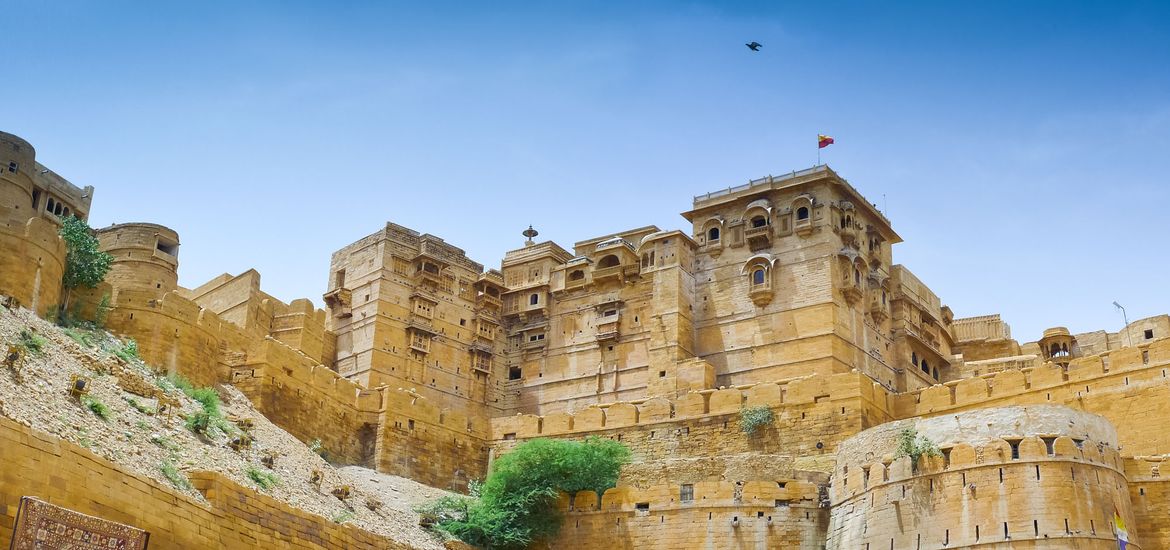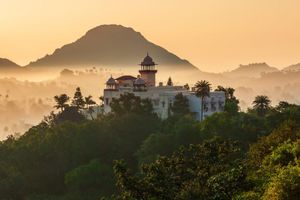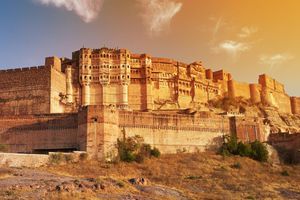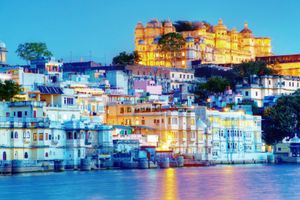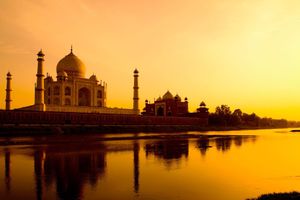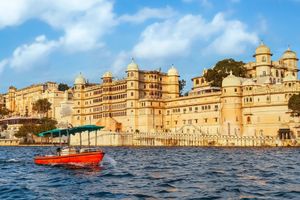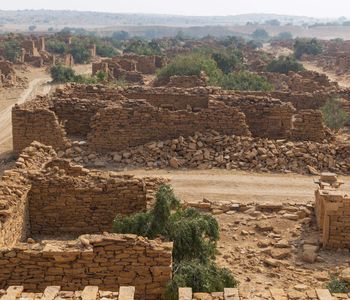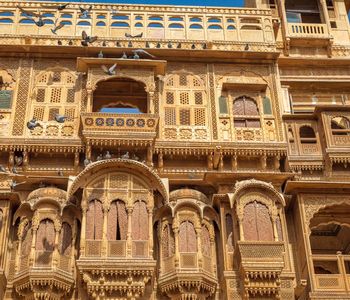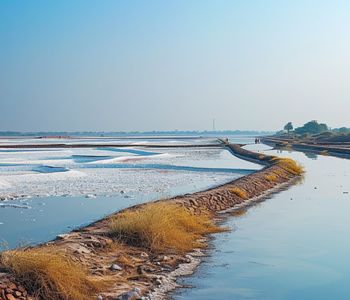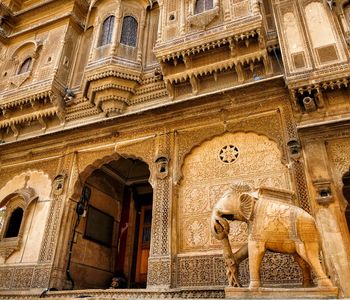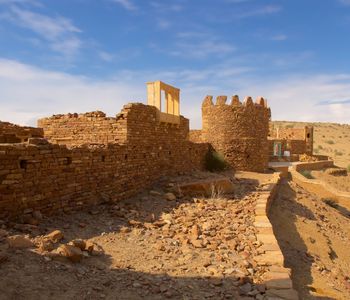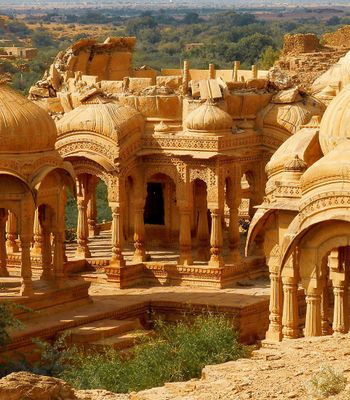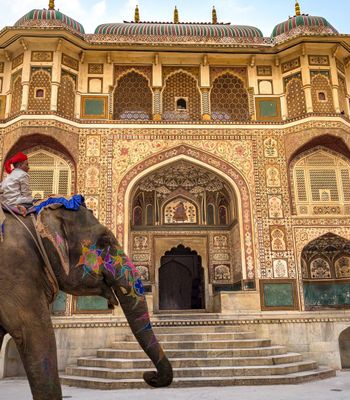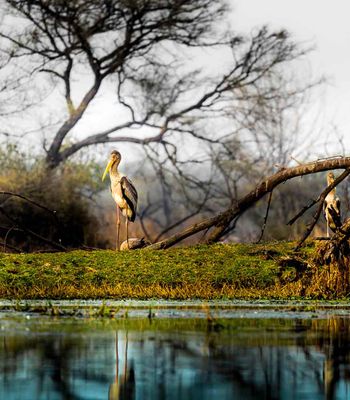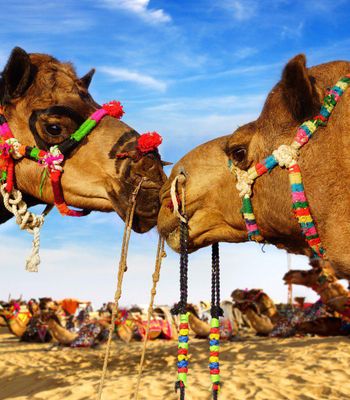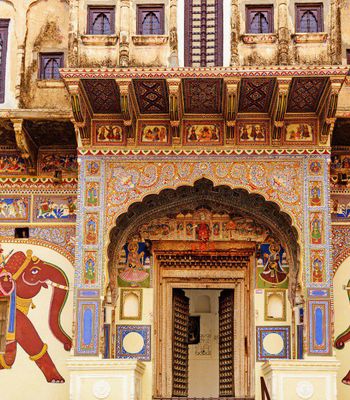Jaisalmer Fort is a historic monument that's still alive. This massive sandstone fort rises above the city, its golden walls glowing under the desert sun.
Unlike most forts that stand quiet and empty, Jaisalmer Fort is bustling with life. Narrow lanes wind through centuries-old houses, temples, and shops, where locals and travellers move through history without even realising it.
It's a mix of the past and present, where every corner carries the scent of spices, old stone, and something almost timeless.
A Window to the Past
Jaisalmer Fort was built in 1156 CE by Rawal Jaisal, a Bhati Rajput, who wanted a new capital after finding Lodhruva unsuitable. Sitting high above the desert, the fort has seen many battles and rulers over the centuries.
In 1299 CE, Alauddin Khalji attacked the fort after a Bhati raid on his treasure caravan. When defeat became certain, the Rajput warriors fought till their last breath, while the women committed Jauhar (self-immolation).
The fort was taken by the Delhi Sultanate but was later reclaimed by the Bhatis. During the 1500s, Rawal Lunakaran defended the fort against several attacks, including one from Mughal emperor Humayun.
To ensure peace, he gave his daughter in marriage to Akbar, bringing the fort under Mughal rule. In 1762, Maharawal Mulraj took back control.
After India’s independence, the ancient trade routes closed, but the fort remained strategically important during the 1965 and 1971 wars. Today, Jaisalmer Fort is one of the few forts in the world where people still live, with around 4,000 residents keeping its history alive.
The Magnificent Architecture of Jaisalmer Fort
Jaisalmer Fort is 1,500 feet in length and 750 feet in width. It rests on a 250-foot slope with a spectacular view of the desert.
The fort's defence system is triple-layered, with a 15-foot-high outer wall and 99 bastions, the majority of which were strengthened in the 17th century. Key architectural highlights include:
- Gates & Walls: The fort has four big entrances, one of which was once guarded by cannons.
- Palaces & Temples: It houses the Raj Mahal Palace, seven Jain temples (built between the 12th–16th century), and the Laxminath Temple.
- Havelis: Beautiful merchant houses like Vyas Haveli and Nathmal Haveli are famous for their detailed carvings.
- Drainage System: The Jaisalmer fort used a special "Ghut Nali" system. This was a sort of building designed to channel rainwater, but it has degraded over time due to current construction methods.
Must-Visit Spots and Secret Treasures of Jaisalmer Fort
Inside its golden walls, you'll find breathtaking palaces, serene temples, and massive watchtowers that previously guarded the city. Here are some must-see places inside the fortress:
The Jain Temples
The Jain temples are well-known for their spiritual importance. Constructed between the 12th and 16th centuries, these temples were dedicated to Jain Tirthankaras. The temples feature holy idols, ancient statues, ornate ceilings, and intricately carved pillars.
Rani Ka Mahal (Queen’s Palace)
Once home to the queens of Jaisalmer, this palace is a beautiful mix of Rajput and Mughal styles. It has carved balconies, colourful wall paintings, and open courtyards where royal life once thrived. Inside, you can see old jewellery, textiles, and artefacts that give a glimpse of how the queens lived.
Patwon Ki Haveli
Patwon Ki Haveli exists just outside the fort. It is a grand mansion built by a rich trader for his five sons. A group of five havelis, each one is filled with stunning carvings, painted walls, and beautiful balconies. Inside, you’ll find old furniture, artwork, and decorative ceilings that show how wealthy merchants lived in the past.
Jaisalmer Fort Palace Museum and Heritage Centre
For history buffs, the Fort Museum offers a deeper look into the fort’s past, with collections of weaponry, ancient scriptures, and old coins. One room features an intriguing display of stamps from the former Rajput states. The museum also houses a vast collection of artefacts, costumes, and other items that highlight the grandeur and opulence of the Rajput era.
Lesser Known Facts about Jaisalmer Fort
Here are some lesser-known facts about Jaisalmer Fort:
- Inspired a Famous Novel & Film: Satyajit Ray’s Bengali detective novel Sonar Kella (The Golden Fortress) was inspired by the fort. He later directed a film based on it in 1974.
- Built on a Triangular Hill: The fort sits on Trikuta Hill, which has three peaks, giving it a natural defence advantage.
- Changes Colour with the Sun: Made of yellow sandstone, the fort glows golden during sunrise and sunset, earning it the name "Sonar Quila" (Golden Fort).
- One of the Largest Desert Forts: It’s one of the few living forts in the world and the largest one situated in a desert.
Best Time to Experience the Magic of Jaisalmer Fort
The best time to explore Jaisalmer Fort is between October and February. Temperatures usually stay between 7°C to 24°C. So, walking through the golden alleyways of the fort becomes an enjoyable experience rather than a sweaty endurance test.
Winter is also when Jaisalmer hosts numerous cultural festivities. The Desert Festival is one of the most popular festivals held in Jaisalmer every year in February.
It turns the whole city into a lively spectacle of folk music, camel races, and stunning sand art. Expect crowds, particularly at famous sights, within the fort.
Getting There: How to Reach Jaisalmer Fort
Having the right guidance will make getting to Jaisalmer Fort relatively easy. Here's how to get there:
By Air
About 267 km away from Jaisalmer Fort is Jodhpur Airport (JDH). To reach there, you can choose to board regular flights from major Indian cities like Delhi, Mumbai, and Jaipur. Once you land, your best bet is to book a private cab for a scenic 4.5 to 5-hour drive through the desert roads.
By Train
Jaisalmer Railway Station is well-connected with Delhi, Jaipur, and Jodhpur. You can travel either by the Delhi-Jaisalmer or Jodhpur-Jaisalmer Express. Overnight trips on these trains are smooth and comfortable. To get to the fort from the railway station, take an auto rickshaw or a local cab for a short fifteen-minute drive.
By Road
If you love road trips, driving to Jaisalmer is an adventure in itself. The roads from Jaipur, Jodhpur, and Bikaner are well-maintained, and you’ll pass by vast stretches of the Thar Desert along the way. For those without a private vehicle, state-run and private buses operate frequently. Rajasthan Roadways buses are a budget-friendly option.
Some places are meant to be felt, and Jaisalmer Fort is undoubtedly one of them. The winding streets, majestic havelis, peaceful temples, and bustling markets will immerse you in the living history of this remarkable fort. However, no words or images can truly capture the experience of walking through its storied corridors—to truly understand it, you must visit.
